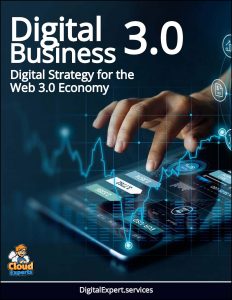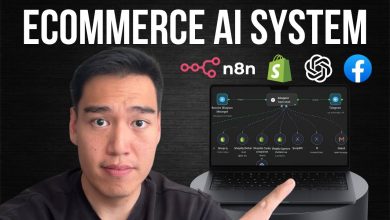 Writing for the CoinTelegraph digital economy luminary Don Tapscott introduces ‘The Trivergence‘, transformation driven by blockchain, Ai and the IoT.
Writing for the CoinTelegraph digital economy luminary Don Tapscott introduces ‘The Trivergence‘, transformation driven by blockchain, Ai and the IoT.
Don has been a visionary at the forefront of Internet innovations since first writing about the Digital Economy in 1994, and he believes we’re now entering the second main phase of this cataclysmic evolution.
The Trivergence refers to the synthesis of three individual technologies: The blockchain, Ai and the IoT, in such a way this environment is entirely pervasive throughout our society.
The IoT interconnects everything through wireless sensors and smart devices, Ai intelligently processes the vast volume of data it produces and the blockchain provides an integrous record of all of these transactions.
This will manifest across a multitude of use cases and industry scenarios, from improving accuracy in forecasting climate change through revolutionizing transport, logistics, healthcare and many many more. Industry innovation collaborations will accelerate progress – Don cites examples like the Mobility Open Blockchain Initiative, an alliance of public and private organizations working to make transportation more efficient, affordable, greener, safer and less congested.
They convened Renault, BMW, General Motors, Honda and Ford Motor Company to begin field tests for a blockchain-based vehicle identification system that will enable drivers to pay highway tolls and parking fees automatically, assigning digital IDs to individual vehicles and record details such as ownership information and service history on a blockchain.
The same technology will enable other industries to pioneer similarly intelligent supply chains. Walmart, for example, are using sensors and Radio Frequency Identification (RFID) tags attached to foodstuffs to track meat or other agricultural products from the farmer’s field to the supermarket’s shelf.
Smart traffic lights can reduce road congestion by adjusting the light cadence to real-time traffic conditions. Connected parking meters and EV charging docks can broadcast their availability to nearby drivers, while smart garbage receptacles notify waste management companies that they need emptying.
In manufacturing, 3D printers are manufacturing aircraft parts in a Boeing facility with a blockchain network facilitating all the patented files, contracting and payments peer-to-peer. Telecommunications companies are no longer negotiating complex, costly and ever-changing roaming agreements, but using blockchain-based smart contracts among providers to automate the web of payments and settlement globally.
Over time, the Trivergence will usher in a next-generation internet where nearly every animate and inanimate object on Earth generates data, a distributed ledger records and secures this data and AI analyzes the data, communicates with the objects, alerts their owners and continuously adjusts and improves the efficiency of the economy and the sustainability of its effects on the environment.
Web3 as the Next Era of the Digital Age
Don Tapscott views Web3 as the “second era” of the internet, building on his earlier predictions in The Digital Economy (1994) about networked intelligence. He describes Web3 as a decentralized, trust-based internet that moves beyond the “Read-Write” Web (Web 2.0) to the “Read-Write-Own” Web.
This evolution empowers individuals by giving them ownership over their digital identities, assets, and data, challenging the centralized control of tech giants. He sees Web3 as a convergence of technologies—blockchain, AI, the Internet of Things (IoT), and extended reality—that collectively redefine economic, cultural, and social systems.
Blockchain as the Foundation of Trust
Tapscott has long championed blockchain as the backbone of Web3, calling it “the second generation of the internet” in his TED talks and writings. He argues that blockchain’s decentralized ledger provides a trust protocol that eliminates the need for intermediaries, enabling peer-to-peer interactions with unprecedented security and transparency.
This trust mechanism, he believes, unlocks Web3’s potential to transform industries like finance, healthcare, and governance by redistributing power from centralized entities to individuals and communities.
Economic and Cultural Disruption
Tapscott emphasizes Web3’s capacity to reshape global prosperity. He highlights how tokenization—representing assets like art, real estate, or intellectual property as digital tokens—creates new economic opportunities and democratizes access to wealth creation.
Culturally, he envisions Web3 fostering a participatory digital landscape where creators, artists, and users retain control over their work through innovations like NFTs (non-fungible tokens) and decentralized platforms, breaking free from the exploitative models of Web 2.0 intermediaries.
A New Social Contract for the Digital Age
A recurring theme in Tapscott’s thought leadership is the need for a reimagined social contract to address Web3’s opportunities and challenges. He argues that Web3 can tackle pressing issues—privacy erosion, inequality, and the power of Big Tech—by restoring user sovereignty over data and identity (e.g., through self-sovereign identity systems).
However, he cautions that realizing this potential requires new governance models, laws, and cooperative frameworks to ensure fairness, sustainability, and interdependence in a decentralized world.
Optimism Tempered with Realism
While bullish on Web3’s transformative power, Tapscott acknowledges its perils. He warns of a “darker side,” including risks like misuse of AI, regulatory lag, and societal disruption from rapid technological change.
His balanced perspective—evident in works like Blockchain Revolution (co-authored with Alex)—urges leaders to harness Web3 proactively to solve global problems (e.g., climate action, healthcare inefficiencies) while mitigating its downsides, such as job displacement or exacerbating digital divides.
Collaborative Innovation and Governance
Through the BRI, Tapscott advocates for “coopetition”—collaboration among competitors—to scale Web3 technologies. He sees decentralized autonomous organizations (DAOs) and other Web3 governance structures as critical to managing this new internet era. His insights stress that Web3’s success hinges on collective efforts across businesses, governments, and civil society to establish standards, share data securely, and drive adoption.
A Legacy of Forward-Thinking
Tapscott’s Web3 insights build on his decades-long track record of anticipating technological shifts. Just as he foresaw the internet’s promise and perils in the 1990s, he now positions Web3 as a chance to “right the wrongs” of Web 2.0—such as privacy loss and centralized control—while unlocking human potential.
He often frames this as a personal and professional legacy, amplified by his collaboration with Alex, whose book Web3: Charting the Internet’s Next Economic and Cultural Frontier (2023) extends these ideas.
In summary, Don Tapscott’s Web3 thought leadership blends visionary optimism with pragmatic strategy. He sees Web3 as a technological and societal inflection point that can empower individuals, disrupt outdated systems, and foster a more equitable digital future—provided humanity navigates its complexities with intention and cooperation. His work continues to inspire leaders across sectors to rethink how technology can serve the greater good in this new era.




